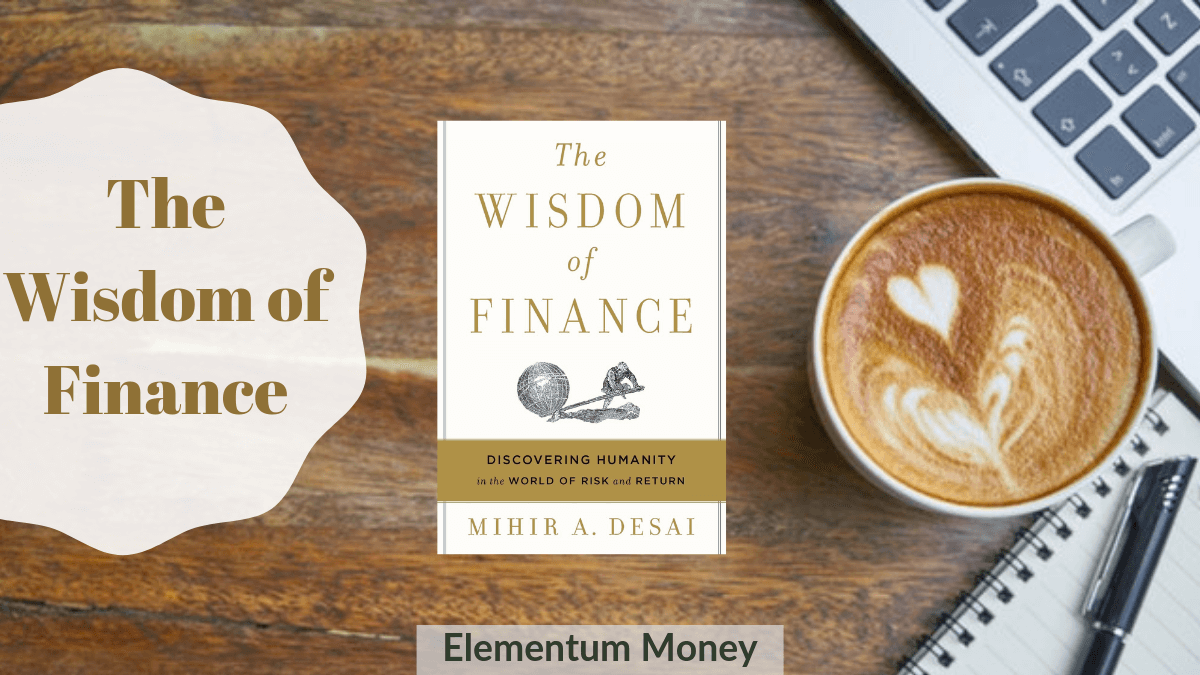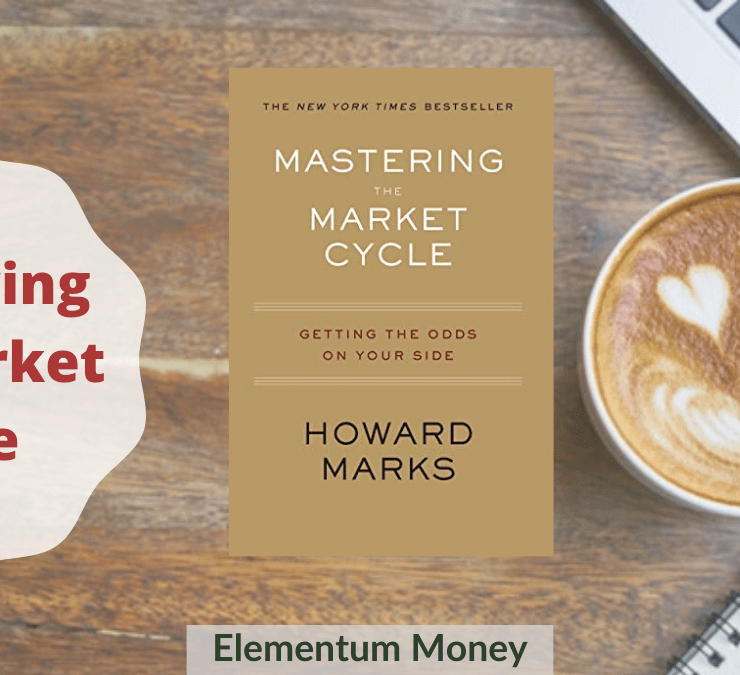My husband’s brother is one of those people I get to see often and share a bond of mutual adoration with. Being an HR professional, he has also picked up a habit of reading personal finance books. I generally like to claim some credit for this direction. Some time back, he was literally bouncing up and down in excitement as he told me about a book called “Wisdom of Finance” saying how I must read it. At that time, I was in the middle of reading Naked Money and was glad to retort that I myself am reading a pretty cool book. As serendipity would have it, I got an email some days later from the American library mentioning it as one of the new entrants. I reserved it for myself and got my hands on it as quickly as I could. If I were to cut this story short, I would simply say that my brother-in-law was right and I would have really lost out if I hadn’t read this book.
What is the wisdom of finance?
While his Wikipedia page is disappointingly scanty, I found Mihir Desai’s career graph to be pretty interesting. He is a history and economics graduate, MBA from Harvard Business School and then a PhD. from Harvard University in political economy.
This book is a merger of his two interests of humanities and finance. Being a history graduate and an erstwhile marketing professional myself, seeing these two twains meet was quite a delight for me. The book draws striking parallels between literature, history and philosophy to finance as well as taking life lessons from financial principles. His passion for finance is also out there to see with his attempts to return the noble reputation back to its practitioners.
It is a short power-packed book which is clearly a result of years of absorbing content in different fields, a keen sense of observation as well as a phenomenal skill of joining random dots in eureka-inducing results.
While Desai makes his points through eight succinct chapters, I will refer to five of my memorable takeaways from the book.
Insurance
It is only after I started studying for Certified Financial Planner that I gave more than a passing thought to the idea of Insurance. This chapter was fascinating in its description of the history of insurance, connecting it to a piece of literature as well as some interesting historical instances of insurance and annuities gone all wrong.
However, the one thing which stayed with me was how he talks about the two core principles of insurance: randomness and predictability in numbers. Individually, we all know life can be random and we need insurance to cover those unexpected events. But, when insurance companies start considering these individual instances in large samples, things start showing predictable patterns which is where the actuarial team comes into the picture. Also, it is only with the experience of sampling of the trends shown for years that companies are able to keep improving in their predictability since every population behaves differently.
For me, the chapter nailed it with the following phrase which echoed a thought I have been thinking for some time now:
Only by sampling what the universe has to offer can we learn anything of value. We should experience as much as possible – just as insurance companies must – in order to make good decisions and understand the world with the right probabilities. Carpe diem, indeed.
-The Wisdom of Finance, Mihir Desai
As Desai puts it, experience as much as possible. Be open to people and experiences and places for you never know what value you are accumulating from all such moments.
Risk management
This was probably one of the most phenomenal chapters in the book. The author takes us on a journey of breaking down financial concepts like options and beta. While admirable in itself, the way he drew life lessons from it literally took my breath away. I still remember reading it the first time, pausing, rereading it and instinctively feeling my eyes widen in comprehension.
He describes options as a financial tool to reduce risk, by giving the investor as the name suggests, options. So, essentially, you are not committing to something fully but in some ways paying a bit for the optionality of getting a way out or an alternate option. The objective is that you should be able to take more risks, as the magnitude of it gets reduced with the options that you pay for.
But, what happens when people misuse the idea of options and crowd themselves with it to finally end up not committing to anything? Have you come across people who keep talking in terms of two or three options that they have but seldom end up exercising any of them? Sometimes I literally feel like I am surrounded by them. In some ways, it’s easier to be at the shore and wait for a wave which feels less dangerous rather than take the boat out and sail. The author puts that lesson pretty well in the following words:
A focus on the creation and preservation of choices can ironically lead to an inability to make choices. Alternatively, individuals most unable to make decisions becomes obsessed with the idea of optionality and frame their inability in terms of preserving optionality.
The Wisdom of Finance, Mihir Desai
The author also discusses the idea of a portfolio and the importance of diversifying our assets and asset classes. While I am well aware of this in theory, as a person I am more inclined to turn up my nose at debt and rather keep accumulating equity. In this case, the author introduces the concept of beta and how that helps us accumulate assets which move in different directions and result in varied magnitude of movement to reduce the risk of the entire portfolio.
Sounds like a textbook? Wait for it. In this case, the most interesting part was how he correlated high-beta, low-beta and negative beta assets to our personal lives and relationships using the structure of friendship provided by Aristotle. High beta assets are the ones that perform much higher when the economy is doing well and drop also as badly when it isn’t, for instance, equity. Desai correlates it to the LinkedIn network and professional acquaintances who always seem to swell in number and exuberance when we are doing well and become conspicuously absent in our bad times.
On the other hand, low beta assets are more stable with a lesser magnitude of swings on the upside or the downside when it comes to economic growth, similar to the role that debt plays in our portfolio. This Desai correlates to the close, steady friends we develop through our lives who are with us irrespective of how we might be doing in life or stature.
Finally, Desai describes negative beta assets are where we keep paying without expecting anything to just manage the risk in our lives, like our life insurance premiums. He correlates negative beta assets to our families, the people we love unconditionally. He talks about how they are there to get us down from our high horse the minute we start flying too high for our own good and are also there for us when we fall the hardest.
Personally, I never really thought like this and the way he connected these dots made perfect sense to me, also in the bargain making risk management far more relatable.
Value
The author talks about three main aspects of value creation – first, exceed the expected rate of return as custodian of the capital second, keep doing it as long as you can and third keep growing so that you can continue delivering higher returns than the cost of capital.
If this sounds complicated, it’s another reason to visit this wonderful book as he makes these seemingly hodge-podge statements after a lot of illustrative examples. The chapter also inspires him to give a lot of other valuable life lessons.
Desai also talks about the value of the intangibles like brand and goodwill of a company that often do not find their way on to balance sheets. The way he correlates it to life is something we probably hear often enough to never heed to, but said in this way, maybe it will strike a chord:
Individuals who measure their progress by tallying their own personal balance sheets will make the same mistakes that accountants make. They will undoubtedly emphasize a score-keeping system that prioritizes the many things that they can count precisely – which may well have no true value. Conversely, the score-keeping system ensures that truly valuable assets will never show up on the balance sheets because their value is too hard to put a number on.
-The Wisdom of Finance, Mihir Desai
Leverage
Another point on which I agreed with the author was his admission of the fact that sometimes finance is made unnecessarily complicated by using jargons that other folks may not understand. For instance, leverage can simply be called debt or loan. But then, when Desai gave the reasoning behind the term which also ended up becoming the cover for the book, it made perfect sense.
Leverage comes from the word lever. As you can see from the image above, the book cover shows how with the help of a simple lever big weights can be moved far more easily. When used well, leverage can help companies and even individuals achieve far greater heights than they could on their own. However, like the traditional lever, the leverage can also end up with the weight rolling back in the opposite direction, crushing the person right under it.
Desai correlates the idea of leverage to our embedding ourselves in networks and relationships which require reciprocal commitments. However, it is with these networks that we are able to reach much greater heights than what we would be able to do on our own. As usual, a quote from the book itself will do much better justice to the idea:
Most of all, leverage may actually make us better people by holding us accountable as we commit ourselves to others with high standards. It also just might enable us to live longer and richer lives than we can imagine – and to move the world in the process.
-The Wisdom of Finance, Mihir Desai
Hating finance and its practitioners
While I think we are still better off in India when it comes to the respect and reputation that finance professionals have among the people, there is a definite mistrust. Before I shifted from the retail industry to banking, I used to hate banks. I used to hate going to the branch or having to do anything with finance. As for finance professionals, while my father may never admit to me directly, he does think of a lot of us as crooks and unnecessarily highly paid (in which bracket I definitely do not fall).
The author starts out to untangle this knot by talking about one of my favorite economic theory, that of marginal utility. What we might like as a novelty, loses its sheen with every incremental accumulation. He talks about how that is a bedrock principle of finance and ironically most of the practitioners end up losing sight of.
When he talks about finance practitioners, it mostly paints investing professionals with a wide brush. He talks about how they are in an industry which gives them a quantifiable response to their actions almost every day. It is only by attributing their drops to luck and gains to their ability that they can keep their confidence going to keep doing the job consistently. Considering the quantum of money they deal with, all their results are similarly magnified. So, the net result? A vicious cycle of self attributing success to oneself and helping it to fuel unnecessarily inflated egos and ambitions ensues.
Consider this the asshole theory of finance. It’s not finance that’s bad. It’s not the people who finance attracts who are bad. It’s just that finance fuels ego and ambition in an unusually powerful way.
The Wisdom of Finance, Mihir Desai
However, that’s not to say that everyone in the field ends up behaving in a similar manner. There are enough and more professionals who remember why they joined the industry and keep themselves hinged to the things that matter in life, rather than running after the next materialistic possession or ego blasting asset. As I grow in this field, it is a good reminder to be one of the latter category than become the type that ends up giving the industry itself a bad name.
There is a phrase in Hindi that I am really fond of and often use to refer to some of my petite friends – chhota patakha, literally translating to a small firework and also meaning a power punch in a small package. This book of merely 177 pages is phenomenal value for anyone wanting to understand finance better or for finance practitioners wanting to fall in love with their subject all over again or just for someone wanting to read a book by an author with a unique lens to the world. You just cannot go wrong with it.
Have you read the book? Do you believe that humanities and finance can go hand in hand? Let me know your thoughts in the comments below.





Leave a Reply